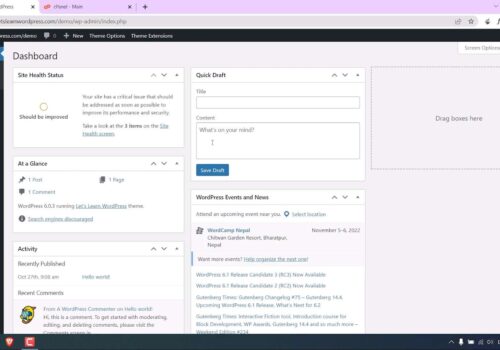Unlocking the Secrets to Crafting a UX Designer Portfolio: Five Simple Steps
A UX-design portfolio is a crucial aspect of a UX designer’s career. It demonstrates a designer’s skills, experience, and capabilities to potential employers and clients. A well-crafted UX-designer’s portfolio may be the catalyst in attaining your dream job, surpassing other applicants. In this article, we will explore the process of creating a personalized UX portfolio. Let’s begin!
Uncovering What Employers Need to See From Candidates
Employers looking for UX designers are not only interested in technical skills, but also other valuable attributes. They are seeking individuals with the right mindset, attitude, and a portfolio that showcases their understanding of UX design principles. Being an excellent UX designer requires the ability to think critically and creatively, while always considering the user’s experience. User experience design firms want UX design portfolios that demonstrate a deep understanding of how users interact with products and services, as well as the ability to creatively solve problems. Ultimately, they are looking for someone who can bring a unique perspective to their team and contribute to creating outstanding user experiences.
Step 1: Identify Your Goals and Target Audience
Before starting the creation of your UX portfolio, it is crucial to determine your goals as a UX designer and identify your target audience. Take time to consider the specific employers or clients you wish to collaborate with and ensure that your portfolio reflects their requirements. Tailor your UX portfolio to their needs, showcasing your best skills and how they align with their expectations. By doing so, you will significantly enhance your chances of success. Moreover, this process will help you identify which experiences and projects best demonstrate your value as a UX designer.
Step 2: Gather Your Relevant Projects and Experiences
Once you have identified what type of projects or experiences best showcase your skills, start gathering all of the relevant materials you will need for each UX project. This includes screenshots of the finished product, wireframes and user flows, as well as any relevant user research or data. Collecting your projects in one place ensures that you have everything you need when it’s time to create your UX design portfolio.
Step 3: Prepare Visuals for Each Project
Hiring managers are often visually oriented, so having compelling visuals can make or break your portfolio. Choose visuals that show off both the beauty and functionality of your design work–for example, screenshots of your product page alongside a screenshot of the user flow leading up to that page. Additionally, include a written summary of each UX project that explains the problem you solved and how you solved it.
Step 4: Craft Your Personal Brand Story
Crafting a compelling portfolio that showcases your work and experiences is crucial, but it should delve deeper to narrate a captivating story about you as a UX designer. This is where your personal brand story comes into play. Consider your unique qualities and how your skills can bring value to employers or clients. Jot down the reasons why someone should collaborate with you and what sets you apart from other designers. This will help hiring managers recognize why they should select you over other candidates.
Step 5: Assemble Your Portfolio in an Impressive Way
Now that you have collected all the required materials for your first UX portfolio, it’s time to compile them into an impressive package. Select a platform that presents your projects and biography in a visually appealing way to create an eye-catching portfolio. Include visuals and summaries for each design project, along with a personalized introduction. Also, remember to provide your contact information to facilitate easy communication for potential employers or clients. This will allow them to reach out to you directly with any inquiries or requirements they may have.
Top Platforms for UX Designers to Showcase their Portfolio
Deciding which platform to upload your UX design portfolio examples on can be an intimidating task with the vast selection of choices. To help make this decision easier, we’ve compiled a list of some of the best places where UX designers can upload their portfolios. From gratis hosting sites to budget-friendly solutions, you have numerous choices to choose from that will enable you to create a striking virtual presence. Every platform provides special characteristics and advantages that make them the ideal choice for highlighting your UX design skills to their full potential. So whether you’re just starting out or already have years of experience under your visual design belt, there’s sure to be an option here that meets your needs and helps you get noticed by potential employers.
Behance
Behance offers easy-to-use tools that make it simple to upload visuals and written summaries of your projects, as well as create an aesthetically pleasing portfolio. Additionally, Behance provides exposure to potential employers or clients by allowing you to share your work with the design community.
Dribbble
Dribbble is an excellent platform for UX designers to develop a portfolio and display their finest work. It provides a diverse range of tools that simplify the process of uploading visuals, writing summaries, and creating a refined portfolio. Dribbble also facilitates connecting and networking with other members of the UX design community.
Carbonmade
With Carbonmade, you can create a portfolio that stands out for its aesthetic appeal and usability. The platform offers various features and benefits, such as the ability to upload visuals, write summaries, and organize projects into collections to make them easier to find. Additionally, Carbonmade offers the ability to connect your portfolio with social media accounts, allowing you to reach a larger audience.
Adobe Portfolio
Adobe Portfolio provides an unprecedented opportunity to design and craft a visually stunning page in the blink of an eye, with various choices for curating its look and feel to showcase your one-of-a-kind brand. Adobe Portfolio gives you the power to link your portfolio with social media accounts, allowing you to magnify your work and ultimately reach more eyes- especially those of potential employers or clients! Showcase yourself on a larger scale and get noticed by who matters most.
Here are only a handful of the many incredible platforms available for UX designers to showcase their portfolios. With numerous options to choose from, it is essential to conduct your research and select the platform that will suitably meet all of your requirements while allowing you to differentiate yourself from competitors.
Conclusion
Crafting a UX design portfolio is a challenging yet achievable endeavor that necessitates thoughtful consideration and preparation. By adhering to the steps described above, you can develop a portfolio that effectively demonstrates your value as a UX designer and makes a memorable impression on employers or clients. Ensure to incorporate visuals of your projects, craft genuine summaries outlining your problem-solving methodology, create your own unique personal brand story, and present everything in an impressive manner.





